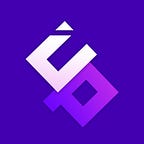NFT platforms are exploding, but what are they doing to stand out?
The borders of NFT land have really been blown open recently, haven’t they? Non-Fungible Tokens (NFTs) have been around since 2017, but only entered the mainstream earlier this year. Sales on NFT giant OpenSea couldn’t crack USD 10 million in January. In June, sales estimates hit USD 150 million. According to some reports, the market was worth USD 2.5 billion in the first half of 2021.
Hot, hot stuff.
Many people still don’t understand what they are, and, as with any new technology, speculation is rife. That hasn’t stopped a slew of platforms from popping up and exploring the potential of this hot new(ish) technology. Even the NBA has gotten in to the game, with NBA Top Shot turning iconic basketball moments into NFTs.
What are the Biggest Platforms in the NFT Space?
One of the biggest platforms, OpenSea, has already been mentioned. It’s certainly one of the most valuable, with six multi-million dollar investment rounds. It offers a bunch of services, from buying, selling and auctioning, to their own minting service so that users can create their own NFTs, with something like 700 projects including cat-breeding simulators like CryptoKitties and real estate in VR World DecentralLand. As one of the oldest, launching in 2017, it can do a bit of everything.
You also have other platforms, such as Rarible and KnownOrigin, which specialize in unique art assets. Some platforms, such as SuperRare, go a step further by only working with a small number of handpicked artists (for now, anyway).
Art Helps NFTs Enter the Mainstream
Art pieces are often the sales that make the news. Mike “Beeple” Winklemann’s artwork “Everydays — The First 5000 Days” fetched a very, very nice USD 69 million at Christie’s back in March. Partly that’s because the numbers are sky-high — it is the art world, after all — and partly it’s because most readers can wrap their heads around art NFTs.
There are plenty of platforms exploring other uses. Myth Market, for example, specializes in branded trading cards and memorabilia. Others, like Bakery Swap and Enjin Marketplace, have found ways to gamify NFTs. Some, like Axie Infinity, make that their entire focus, turning NFTs into something like Pokemon.
One of the platforms looking to focus down on practical, user-friendly applications of NFTs is Uptick, which launched in 2018, and just recently became the first NFT app on the Cosmos/IRISNet Ecosystem. They’re worth mentioning because they do a couple of things differently.
What Makes Uptick Stand Out from Other Platforms?
For one, they do both real-world and crypto-native assets. Collectible NFTs are the sort of art assets that many people now associate with the tech, but since the beginning, they’ve also been focusing on functional NFTs. That’s stuff like event ticketing, which provides practical applications, such as access verification and so on. Users can create their own e-ticket with a finger swipe, and manage the buying and selling easily.
They also provide both the primary and the secondary market in one convenient app. NFT creators get the tools they need for creation, sales, management and verification, and buyers get all they need to purchase, transfer and resell their NFTs.
Recurring Rewards for Creators Helps an NFT Marketplace Thrive
Part of the way they keep the Uptick network thriving is with loyalty protection and fair profit sharing for creators. Every time an NFT is sold on the market, the original creator gets a portion of the trade. A few marketplaces do this too, but on most, NFTs are treated the way art is: once the asset is sold, the artist doesn’t see a penny from it ever again. Although news of a big sale, like Beeple’s, can boost the value of an artist’s other work, that’s no guarantee.
Operating the way Uptick does insures that a creator stays invested in a platform, which is only a good thing for both buyers, sellers and creators. Plus, they offer peer-to-peer communication between merchants and customers, so service stays personalized.
Uptick also has a lot of potential for cross-chain compatibility. They’re aiming for an open environment where NFT assets can be transferred freely across a number of major blockchain ecosystems. That’s a really important element in the quest to create a sustainable space for NFTs to flourish long-term.
User-Friendliness Is Key to Getting New Users
Most importantly, maybe, is that Uptick is built for mobile. The reality is that the vast majority of internet users will pick the on-the-go option every time, which means that anyone trying to get the general public invested in the NFT world needs to make the full functionality of their platform as app-able as possible.
NFTs have plenty of potential. Having just hit the mainstream, there’s going to be a surge in applications, innovations and interesting new uses. The assets might be what make the news, but it’s the stability, functionality, and accessibility of the platforms that are going to define what success means in the NFT world.
